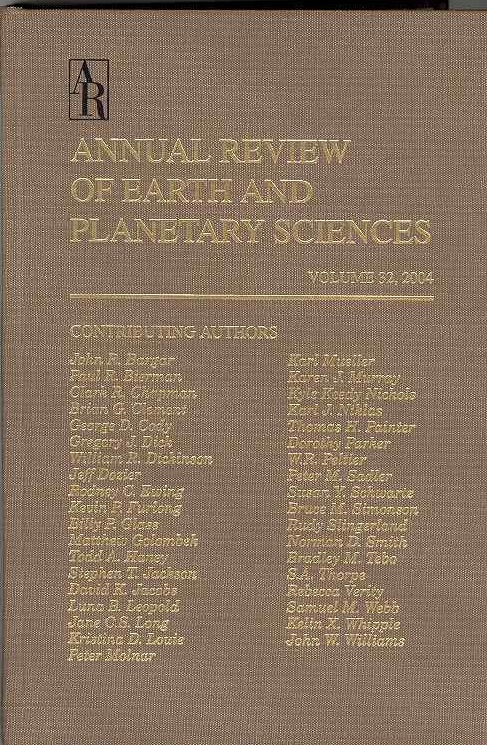Experimental Thermochemistry Through the Years with Application to Chalcogenides
IF 13
1区 地球科学
Q1 ASTRONOMY & ASTROPHYSICS
Annual Review of Earth and Planetary Sciences
Pub Date : 2025-05-30
DOI:10.1146/annurev-earth-041023-094742
引用次数: 0
Abstract
Chalcogenides (sulfides, selenides, tellurides, arsenides, antimonides) are important in natural processes, including formation of ore deposits on Earth, early stages of planetary accretion, and formation of condensates in planetary atmospheres. Their physicochemical properties render them suitable for a wide range of industrial applications. While thermodynamic data are available for many endmembers, there are significant gaps in both thermodynamic and associated structural constraints, especially for complex systems. The continuous evolution of high temperature calorimetry into oxidative drop solution calorimetry has facilitated the measurement of enthalpies of formation and mixing and surface energies involving nonoxides, including chalcogenides. These are essential for modeling processes in nature and technology and for understanding the underlying properties that define their stabilities. This article reviews the development of these calorimetric techniques and summarizes available thermochemical data for common chalcogenides.多年来的实验热化学及其在硫属化合物中的应用
硫属化合物(硫化物、硒化物、碲化物、砷化物、锑化物)在自然过程中很重要,包括地球上矿床的形成、行星吸积的早期阶段以及行星大气中凝析物的形成。它们的物理化学性质使它们适用于广泛的工业应用。虽然许多端元的热力学数据是可用的,但在热力学和相关结构约束方面存在重大差距,特别是对于复杂系统。高温量热法不断演变为氧化滴液量热法,这使得包括硫族化合物在内的非氧化物的生成焓、混合焓和表面能的测量变得容易。这些对于自然和技术中的过程建模以及理解定义其稳定性的潜在属性是必不可少的。本文综述了这些量热技术的发展,并对常见硫属化合物的热化学数据进行了总结。在上个世纪,量热仪器和技术已经发展到能够精确测量包括硫属化合物在内的各种材料。▪尽管人们对硫属化合物的热力学特性越来越感兴趣,但对现有数据的系统审查表明,进一步研究仍有很大的余地。▪对硫属化合物的系统了解将有助于地质环境的建模,并能够预测和改进用于工业应用的地质启发材料。
本文章由计算机程序翻译,如有差异,请以英文原文为准。
求助全文
约1分钟内获得全文
求助全文
来源期刊

Annual Review of Earth and Planetary Sciences
地学天文-地球科学综合
CiteScore
25.10
自引率
0.00%
发文量
25
期刊介绍:
Since its establishment in 1973, the Annual Review of Earth and Planetary Sciences has been dedicated to providing comprehensive coverage of advancements in the field. This esteemed publication examines various aspects of earth and planetary sciences, encompassing climate, environment, geological hazards, planet formation, and the evolution of life. To ensure wider accessibility, the latest volume of the journal has transitioned from a gated model to open access through the Subscribe to Open program by Annual Reviews. Consequently, all articles published in this volume are now available under the Creative Commons Attribution (CC BY) license.
 求助内容:
求助内容: 应助结果提醒方式:
应助结果提醒方式:


